720 Search Results for model
August 8, 2019
by Carole Zangari -

Have you run into situations where you know that aided language input is needed but found it really hard to implement? We’re pleased that AAC SLP Tabi Jones-Wohleber is back with another installment in her visual support series. In this post, she gives us suggestions for things to try when working out the nuances of aided language input. In case you missed them, here are the links to the previous posts in this series. Part 1: Visual & Environmental Countdown Part 2: Organizing Time & Tasks Part 3: Self-Regulation & Understanding Expectations Part 4: Supporting Communication Across Activities & Environments ::::::::::::::::::::::::::::::::::::::::::::::::::::::::::::::::::::::::::::::::::::::::::::::::::::::::::::::::::::::::::::::::::::::::::::::::::: Visual Supports for When Modeling Communication is Hard Despite our efforts, some of the time, or with some individuals, modeling AAC to teach AAC on technology-based devices can be challenging. An individual may be in constant motion, or possessive of their device. Tech-based devices may not be sufficiently durable... [Read More...]
May 1, 2019
by Carole Zangari -
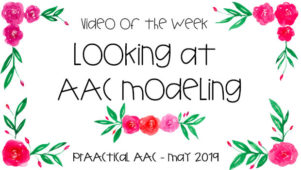
Aided language input and other forms of AAC modeling are often used to help individuals with complex communication needs learn in an immersive AAC environment. Today, we turn to Mara Rogers and her fellow AAC SLPs at the Northeast Intermediate Metro School District in Minnesota. In order to better support their students with AAC needs, they created a series of videos to demonstrate what aided language input looks like for beginning communicators. Enjoy! During Reading Creating Communication Opportunities Group Activities Requesting Rejecting Thank you, Mara, Sara, Maggie, and Olivia for making these videos and to the Northeast Intermediate Metro School District for support of this dissemination effort. Direct Link to Intro Video: https://www.youtube.com/watch?v=qC6q1B3jHEs
February 20, 2019
by Carole Zangari -
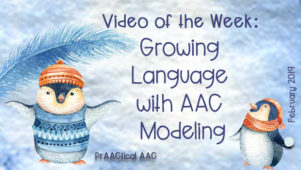
How can we use modeling to help AAC learners move toward linguistic competence? In today’s featured video, Dr. Melissa Malani has lots of ideas for how to do this in the context of shared book reading. Many thanks to Melissa and the wonderful team at Saltillo for creating this presentation and making it widely available. Direct Link to Video – https://www.youtube.com/watch?v=ehvAwtDX-lM
April 11, 2018
by Carole Zangari -

Speak AAC to Teach AAC It’s wonderful to see how many people are actively working on their own skills in aided language input. Today’s video, from the Communication Technology Education Center (CTEC) in northern California, addresses a question that many communication partners have: How much language should I model? Kudos to the STAR team at CTEC for this engaging video. Enjoy! Direct Link to Video – https://www.youtube.com/watch?v=VppaSuAF0f4
June 12, 2017
by Carole Zangari -
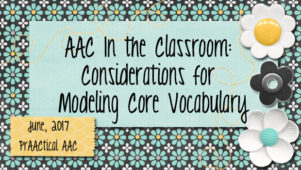
Here in the US, many schools just let out for summer vacation but some special education teachers and SLPs are already thinking about things they want to prepare over the school break so they’ll be ready for fall. Some are contemplating changes to the ways they support AAC in the classroom. We’ve heard from several who are planning to prioritize modeling of core vocabulary using aided language input. Before we start making large core boards and other support materials, though, it’s helpful to stop and think through some important issues. A little planning now will save time and effort in the long run. If you’re planning to do this kind of prep work over the summer, here are some questions for your team to consider. Does each student with complex communication needs have access to an AAC system that includes core vocabulary? If not, why not? In some cases, the students... [Read More...]
April 18, 2016
by Carole Zangari -
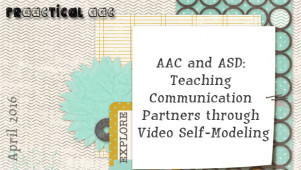
It is an honor to have Dr. Joanne Cafiero, an AAC consultant for individuals with complex communication needs and Autism Spectrum Disorders, as a guest contributor for today’s post. Dr. Cafiero is the author of Meaningful Exchanges for People with Autism an Introduction to AAC (2005). She is a consulting editor for Focus on Autism and Other Developmental Disabilities and has guest edited several of ASHA’s Perspectives in AAC. She was a member of the National Academy of Sciences Committee on Educational Interventions for Children with Autism (2001) and is currently working on an update on AAC and Autism for the Academy. In this post, she shares some of her work on video self-modeling. ::::::::::::::::::::::::::::::::::::::::::::::::: Growing research and first-person reports are illuminating the unique sensory and motor differences experienced by people on the Autism Spectrum. This new information has a huge impact on the AAC practitioner. Motor planning differences in ASD can... [Read More...]
March 23, 2016
by Carole Zangari -

Looking for a research-supported strategy to accelerate communication learning? Consider adding video models to your AAC intervention plan. In previous posts, we’ve written about our love for this strategy and shared resources . Today, we visit one our our favorite preschool teachers, Lindy McDaniel of The Considerate Classroom, to look at an example of how she uses this strategy to support young learners.
January 20, 2015
by Carole Zangari -
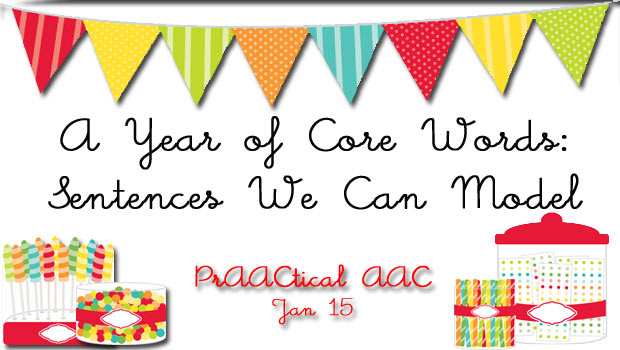
Gone to an AAC conference presentation lately? Seen an AAC webinar? Read an article on AAC therapies? Chances are that they’ve at least mentioned some of the benefits of teaching core vocabulary. Teaching a relatively small set of powerful words is a strategy that empowers language learners and allows them to communicate across contexts. If you are following along with our A Year of Core Words (2013) or A(nother) Year of Core Vocabulary (2014), you may have printed out some of the word cards to use with the AAC learners in your life. Thanks to the kindness of PrAACtical AAC readers we have posts with a variety of resources: Minspeak/Unity version: 2013 PCS versions: 2013 , 2014 Speak for Yourself version: 2014 SymbolStix version: 2013 Once you have them, the idea is to use those to plan learning activities that focus on those particular core words for the month. Let’s... [Read More...]
January 15, 2015
by Carole Zangari -
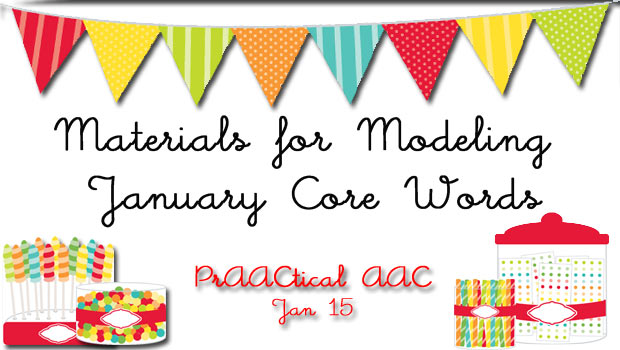
It is so encouraging to see so many SLPs, educators, families, and others support the acquisition of core vocabulary. In this post, we’re thrilled to be sharing a resource by Alison Wade, an SLP from Massachusetts who works with a number of AAC-using children and adults. Alison generously offered to share this document with our 2013 set of January core words represented by PCS, SymbolStix, and traditional orthography. You can download it by clicking the image below or visiting the Download section of our eToolbox. Need ideas for how to use it? Check out our previous post. Thanks, Alison!
January 12, 2015
by Carole Zangari -
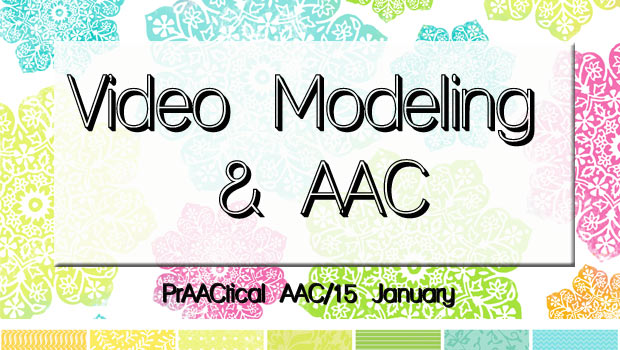
Video modeling is an empirically supported instructional strategy that can help some learners acquire and use a range of new skills. It involves videotaping the expected or desired behavior so that our clients can see, hear, and better understand the skills they are trying to learn. We’ve posted videos about it in the past and know that many of you use it or have considered using it in your clinical practice. Most of the applications have been with speaking children and young adults, but many AAC learners can benefit as well. If you’re thinking of trying out this strategy in your own practice, here are some resources that might be helpful. In a nutshell: Visit the National Center for Professional Development on Autism to review the EBP practice brief on video modeling. Their documents are great for sharing with families and other team members, too. Getting started: Visit Dr. Christine Reeve’s... [Read More...]









